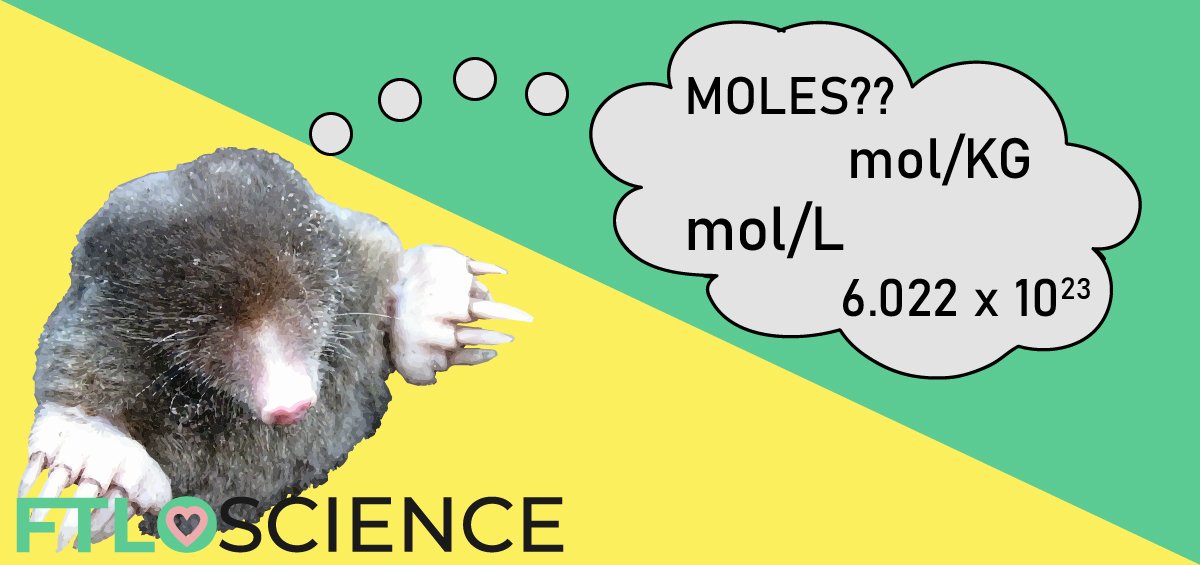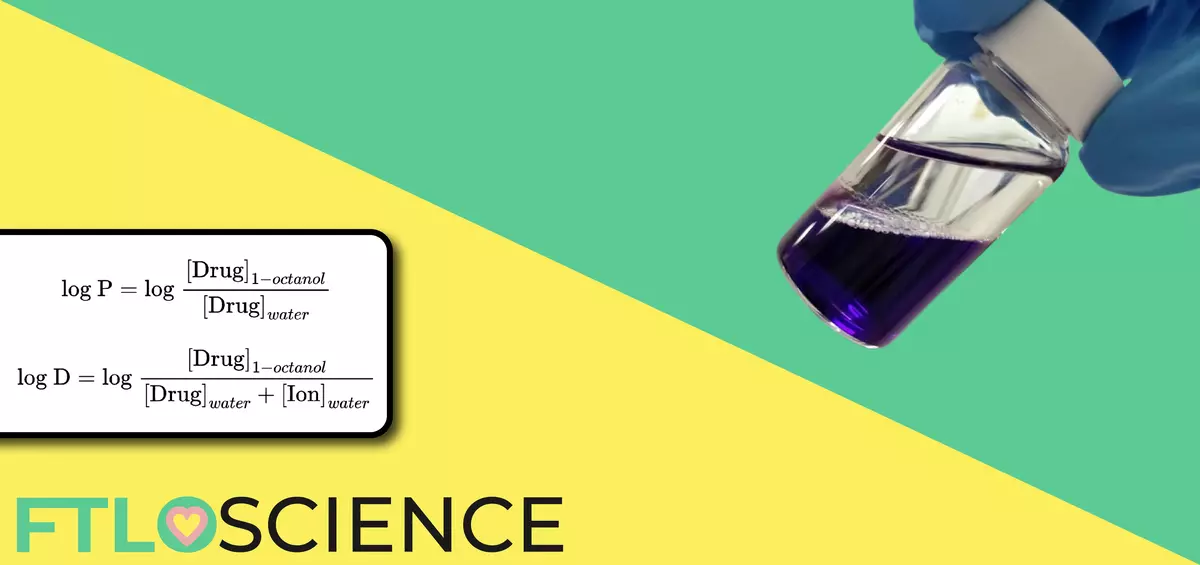Chemistry usually involves tiny molecules and huge numbers. It would be a mathematical nightmare if we had to deal with individual atoms! Luckily, we have the humble mole unit to help make otherwise complex calculations easy. This guide first explains what moles represent in the context of chemistry calculations, then expands on its usefulness in molarity and molality, a measure of solute concentration. Each section comes with worked examples.
Chemical Moles
Before we delve into molarity and molality, we need to understand why moles matter in chemistry. A typical chemical reaction involves more atoms and molecules than is feasible to count, hence chemists use moles to represent them. 1 mole = 6.022 x 1023 units of whatever it is you’re measuring. That’s 602 200 000 000 000 000 000 000, which isn’t exactly a pleasant number to work with. But don’t be intimidated, the mole is simply a unit of measurement, just like ‘dozen’ or ‘grand’. For example, 1 mole of pennies would make you the richest person in the world!
Note: 6.022 x 1023 is also known as Avogadro’s number, named after Amedeo Avogadro, an Italian chemist.
Because they come in different sizes and masses, 1 mole of a certain element will not weigh the same as 1 mole of another element. For example, 1 mole of carbon weighs 12 grams, while 1 mole of uranium weighs 238 grams. These weights are known as the atomic mass, which is a number you can usually find below each element in the periodic table. In the case of molecules, their mass per mole is known as their molar mass.
Remember that molar mass has units of grams, so remember to convert all masses to grams before performing mole calculations!
\text{No. of moles}=\frac{\text{Mass}}{\text{Atomic or Molar Mass}}Worked Example 1
How many moles are there in 80g of nitrogen gas?
Nitrogen gas has a chemical formula of N2, with a molar mass of 28.
\text{No. of moles}= \frac{80}{28}=2.857\text{ moles of }N_{2}Worked Example 2
What is the mass (g) of 14 moles of iron?
\text{Mass}=\text{Moles}\times\text{Atomic Mass}\\[0.1in]
=14\times55.85=781.9g
Molarity: Measuring Solute Concentration
While we can work with moles alone, most chemical reactions occur in some sort of solvent. When we swallow a pill, for example, the drug is distributed throughout our bloodstream. Therefore, the concentration of a substance—the solute—can be more relevant than the number of moles. Usually expressed in the form of moles per liter (uppercase M), the molarity of a solute is also known as its molar concentration.
Remember that units for molarity are moles per liter! So make sure that volumes are converted into L during calculations.
\text{Molarity}=\frac{\text{No. of moles of solute}}{\text{Volume of solution}} Worked Example 1
What is the molarity of 400g of NaCl dissolved in 2.5 L of water?
\text{No. of moles NaCl} = \frac{\text{Mass}}{\text{Molar Mass}}\\[0.1in]
=\frac{400}{58.44}=6.85\text{ moles}\\[0.1in]
\text{Molarity NaCl}=\frac{\text{No. of moles of solute}}{\text{Volume of solution}}\\[0.1in]
=\frac{6.85}{2.5}=2.74\:M
Worked Example 2
You need to make 300 ml of a 0.15 M solution of sucrose (MW: 342.2). How many grams of sucrose do you need?
First, find the number of moles of sucrose required:
\text{Molarity}=\frac{\text{No. of moles of solute}}{\text{Volume of solution}}\\[0.1in]
0.15\:M=\frac{\text{No. of moles of sucrose}}{0.3\:L}\\[0.1in]
\text{No. of moles of sucrose}=0.15\times0.3\\[0.1in]=0.045\:moles\\
Next, use the molar mass equation to determine the mass of sucrose needed:
\text{No. of moles} = \frac{\text{Mass}}{\text{Atomic or Molar Mass}}\\[0.1in]
0.045=\frac{\text{Mass of sucrose required}}{342.2}\\[0.1in]
\text{Mass of surcrose required}=0.045\times342.2\\[0.1in]=15.4\:gMolality: Another Way to Measure Solute Concentration
Similar to molarity (and perhaps confusingly), molality is also a measure of solute concentration. The difference between molarity and molality is, in molality, the number of moles of solute is divided by the mass of the solvent. In molarity, it was the number of moles of solute divided by the volume of the solution. Note that the mass of the solvent is used in the denominator, not the mass of the entire solution! This sometimes involves additional steps during calculation, as you’ll see in the worked example 2.
With units of moles/kg, using molality over molarity in calculations can be useful because both the solvent is measured by units of mass, hence is unaffected by changes in temperature and pressure. In molarity, the volume of the solvent expands when heated and contracts when cooled.
\text{Molality}=\frac{\text{No. of moles of solute}}{\text{Mass of solvent}}Worked Example 1
What is the molality of 82g benzoic acid dissolved in 1.5 kg of ethanol?
Calculate the number of moles of benzoic acid we have, then use it in the molality equation to determine mol/kg.
\text{No. of moles benzoic acid}= \frac{\text{Mass}}{\text{Molar Mass}}\\[0.1in]=
\frac{82}{122.12}=0.67\:moles\\[0.1in]
\text{Molality benzoic acid}=\frac{\text{No. of moles benzoic acid}}{\text{Mass of ethanol}}\\[0.1in]=\frac{0.67}{1.5}=0.45\:mol/kg
Worked Example 2
You are required to concoct 240g of a 1.22 mol/kg solution of potassium permanganate (KMnO4, MW: 158) in water. How many grams of KMnO4 do you need?
Remember that molality is the number of moles of solute divided by the mass of the solvent (not the solution!) Therefore, we need to first find the total mass of 1.22 moles of KMnO4 in 1kg of water.
1.22\:mol/kg\:KMnO_{4}\:solution=\\[0.1in]
1.22\: moles\:KMnO_{4}+1\:kg \:H_{2}O\\[0.1in]
Mass\:of \:1.22\:moles\:KMnO_{4}\:in\:1\:kg\:H_{2}O=\\[0.1in]
(1.22\times158)+1000g=1192.8g
We want 240g of the final solution, so we need to determine the mass fraction to calculate the mass of KMnO4 required:
\text{Fraction of total mass required}=\\[0.1in]\frac{240}{1192.8}=0.2\\[0.1in]
Mass\:of \:KMnO_{4}\:required=\\[0.1in]
1.22\times158\times0.2=38.55\:gAbout the Author

Sean is a consultant for clients in the pharmaceutical industry and is an associate lecturer at La Trobe University, where unfortunate undergrads are subject to his ramblings on chemistry and pharmacology.




